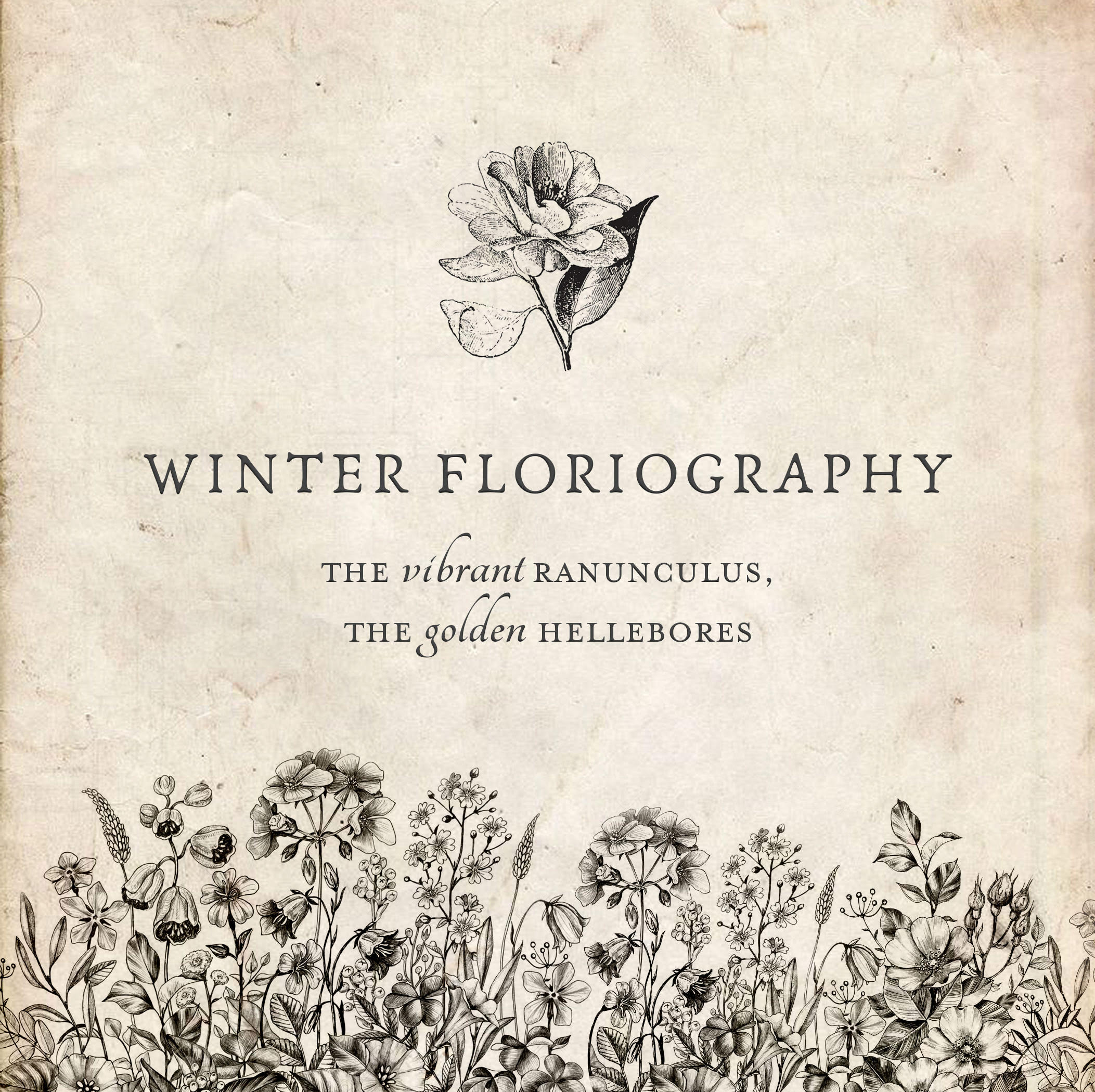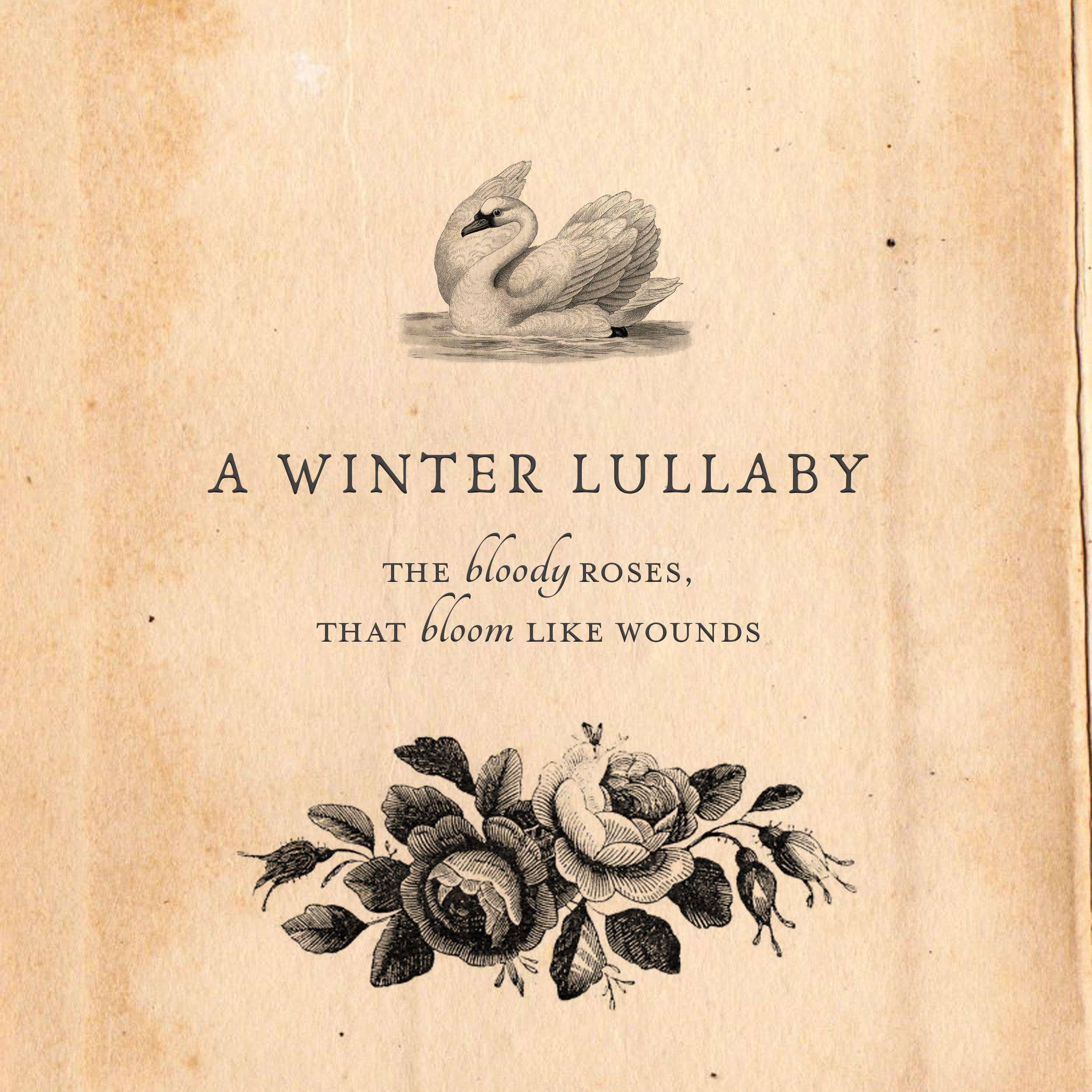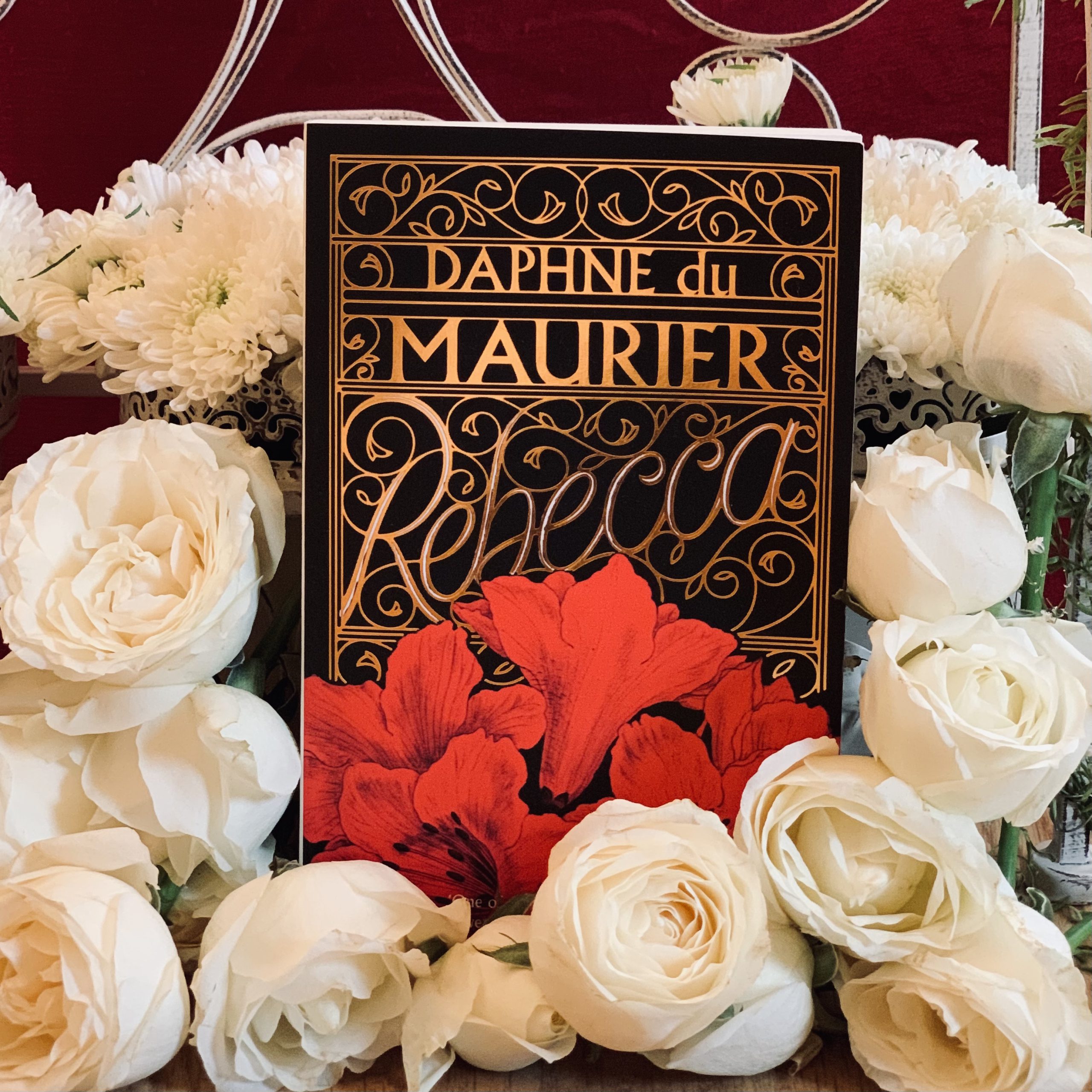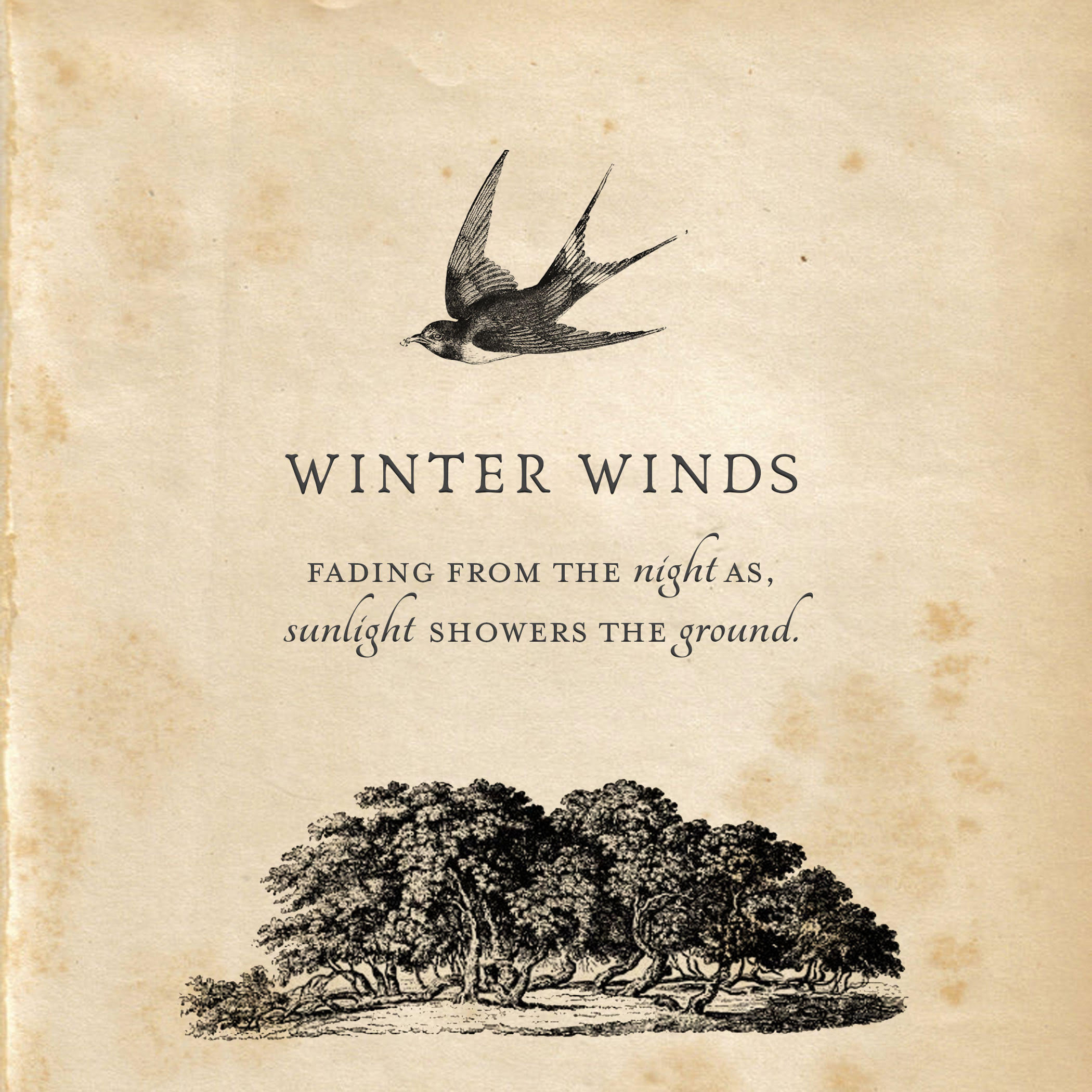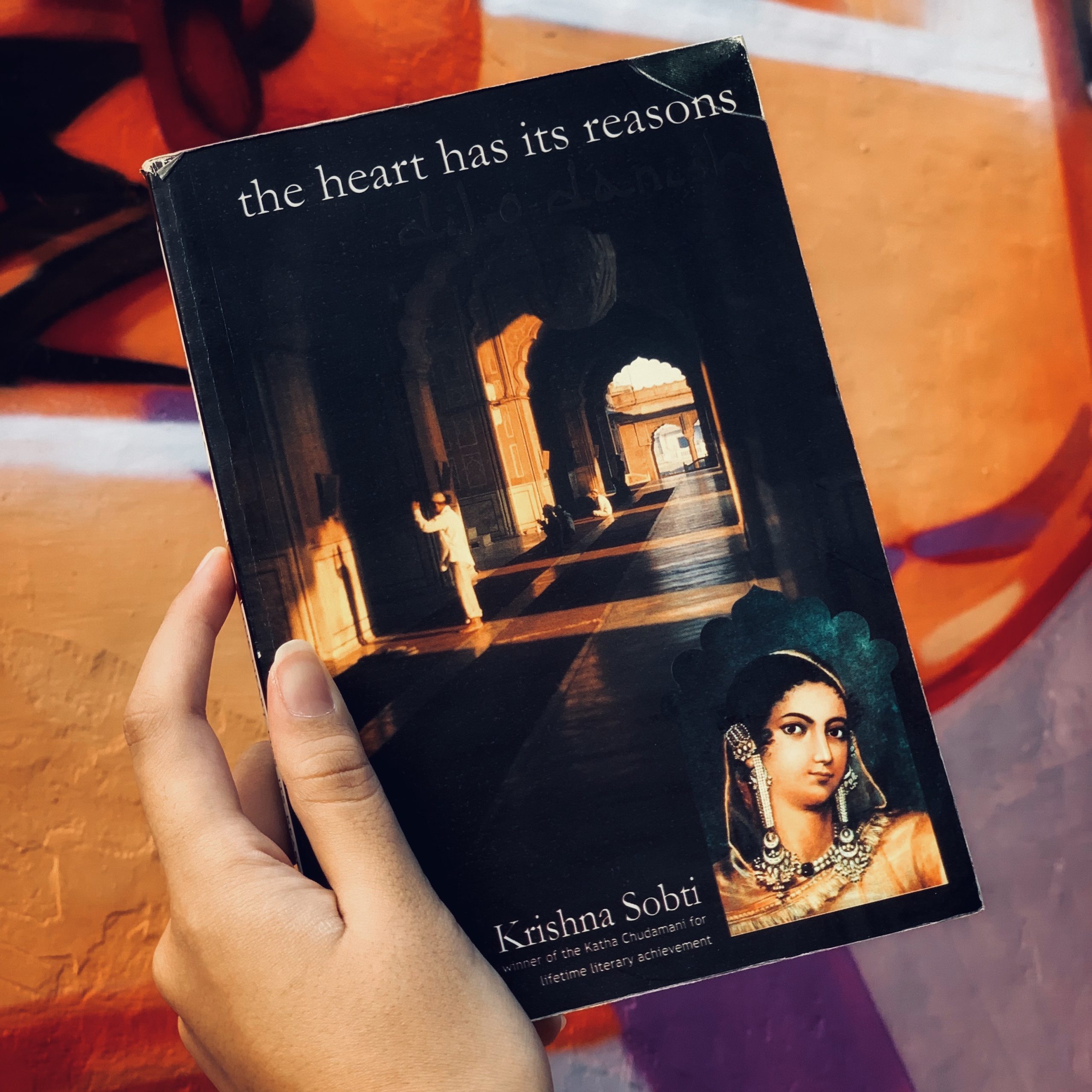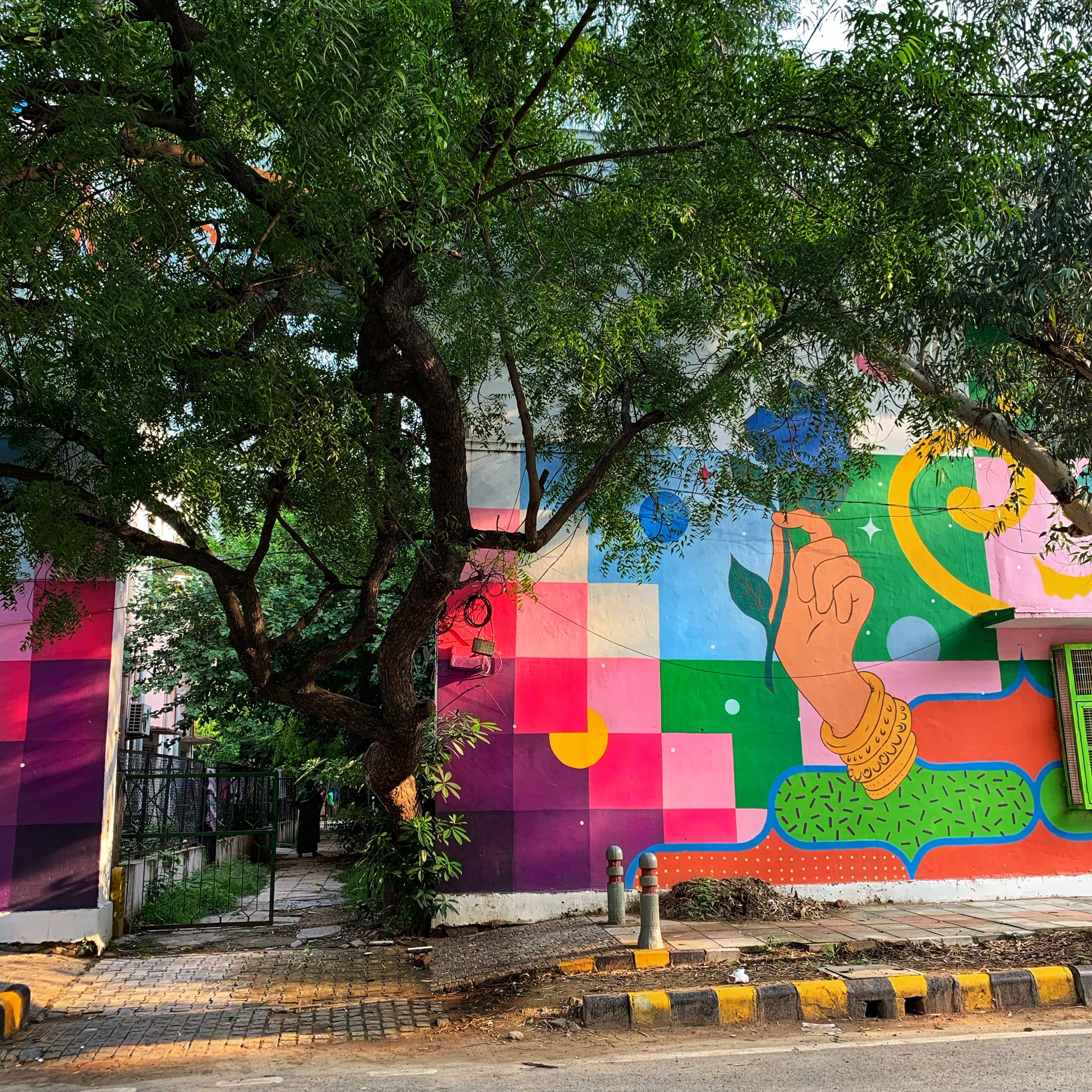The blooms
That blossom
Under the winter sun
Are the most beautiful.
They unfurl
Their petals
Under the last dregs
Of sultry sunshine,
Soaking in the heat
That is sparse.
The frail poinsettias,
The vibrant ranunculus,
The golden hellebores
Like fire in the fields,
Fanned to glory
By frigid winds
And cold, hard soil.
But then I see
Mauve blooms of
Monkshood,
The soft blues of
Periwinkle blossoms
And the blush of
Camellias,
Their cheeks rosy
In the winter wind,
And I wonder which bunch
Is prettier,
So I might adorn
My curls
With the blossoms
That survive
The weather.
A Winter Lullaby
I wonder
Where the swans
Croon,
Their lullabies,
When the lake frosts over.
Do they find shelter
Amongst the soft crocuses
And lavender cyclamen?
Or do they
Nestle,
Within
The bloody roses
That bloom like wounds
On their bodies?
How do they
Find warmth
When the waters
Are icy
And the air
Is chilly?
Or do they
Lie
With their mates
And warble
To the mellow moon,
A swan song
To skate upon the lakes
Until spring.
Rebecca – A Review
I was sent by my high school for a competition, in senior year (2017) a literature festival of sorts, the theme of which was mystery and thriller. There were a number of events (in which I am proud to announce we won a position in every single one). But for our main presentation my best friend and I chose to use the novel Rebecca. With the release of the 2020 film, it seemed only right I revisit the book.
Rebecca is a mystery written by Daphne du Maurier and published in 1938. It follows the life of the narrator (The second Mrs. DeWinters) as she meets, falls in love with and marries Maxim Dewinter, the owner of the great estate of Manderley. It is within the magnificent walls of the estate that one meets the titular character, Rebecca, Maxim’s first wife and the original Madame of Manderley
“last night i dreamt i went to manderley again”
~~ Rebecca, Daphne du Maurier
While reading I was reminded of Wuthering Heights by Emily Bronte. The setting is similar, with Manderly playing a parallel to the haunting moors. The writing is sinister. It reads like a lullaby. Soft and subtle language that flows into a crescendo. The writing takes the reader through a number of dips and highs. I myself not being a fan of mystery found my heart racing as I turned on all the lights, suddenly afraid of the shadows.
The characters seem to come alive on the page like shadows. And while the book is named for Rebecca and narrated by the second Mrs. DeWinter, the true star is the old housekeeper, Mrs. Danvers. She seems to be lurking in all the dark corners of the house, watching and waiting for the narrator to make a mistake. And in her desire to please, the narrator becomes cowed by the old housekeeper. And so while she might be in name Mrs. DeWinter, it always seemed to me the true Madame of Manderley was Mrs. Danvers, her loyalty strictly given to Rebecca, and her aim to get rid of the narrator as quickly as possible. She was a perfect character, with the balance between disloyal and psychopathic written to perfection.
Rebecca, remains a classic Goth mystery. It is the cream of the genre. The writing is haunting enough to border on horror. The characters are complex enough to teeter on the thin line between devoted and obsessed, naive and doormat, there and not there. The characters whirl in and out of the writing. It felt to me like the book was an intricate dance of sorts. Waltzing to the tune of the writing until the last few chapters, where everything is revealed in quick succession. The build up is phenomenal.
I haven’t had the pleasure to watch the acclaimed Hitchcock movie of the 1940’s (aside from the fantastically chilling suicide scene), and nor have i watched the 2020 adaptation. But having reread the book, I’m looking forward to watching both and pinning down the similarities within the novel.
Winter Winds
I have sat at my window
Today
To see the sun rise…
The golden fairy lights
Are draped
Over the trees
Like golden blooms of
Late fall bougainvillea,
And they twinkle out
Fading from the night as
Sunlight showers the ground.
A typical October morning
With smoggy skies,
Filled with
The fragrance of Diwali
The morning sparrow
Flits through the air
Drunk on frigid dewdrops
Like a lady
On fine wine,
Begging the stars
To stay
Just a few moments
Longer,
Before
The cold winds of winter
Rush to fly
On their wings.
Reading My Way Through Delhi
Complimenting my previous post Shades on Delhi~ (https://thezoyaproject.com/2020/10/21/shades-of-september-discovering-the-color-of-delhi/) and it’s artwork here are the books I read, to understand the character, history and secrets of my beloved city. Delhi isn’t just a city, she is a character, just as she is in my life.
Delhi, by Khushwant Singh

Twilight in Delhi, by Ahmed Ali

The Heart Has Its Reasons (Dil-o-Danish), by Krishna Sobti

Delhi is Not Far, by Ruskin Bond

‘Delhi is Not Far’ is a small novella that was my first foray into Ruskin Bond as an adult. It details the life in the small town of Pipalnagar just a few miles away from Delhi just a few years after the long sought independence, when the 5 year plans were the newest thing the country had seen and the aftermath of Partition was still felt rather viciously. The characters are figures who come alive, but so well narrated that I found myself watching what unfolds for them from their eyes. The epileptic Suraj who is the child torn asunder by the violence in 1947, and the barber Deep Chand so alike the parlour ladies who do women’s waxing today. The writing is subtle, building slowly into a crescendo that washes down upon the reader in soft waves as they reach the end of this book. The story while not set in Delhi itself, discusses the dream that is the capital city. A dream for so many in this country, from towns big and small, villages and dusty places we might never even have heard of. Everyone dreams of Delhi. To make it to this city that looks like pictures painted on stained glass, that has stories on its walls and magic in its air, that has history in its gallis and trinkets in every corner and crevice. The dream of Delhi, that elusive bubble that we and every character in this book tries to catch before it pops. And perhaps, we are all fools, those of us who still dream of dirty Delhi, with illusions in our eyes. We are those fools who dream of one day walking a pet tiger named Timothy down the lanes of Chandni Chowk, through the amalta covered roads of Connaught Place and stroll past the artwork of Lodhi District. And for those yet to arrive – Bond does say, ‘Delhi is Not Far’, you need only dream…
City of Djinns, by William Dalrymple

Discovering the Color of Delhi
I have been born and raised in Delhi. It’s a city of contradictions. Here the magic of Mughlai history is paradoxical to the dirty streets and gol-gappa vendors that you know hold the chance of painful food poisoning within the teekha paani. It’s messy and polluted, and steeped in an array of cultures all while being a hub of history. It’s home…
sunscapes ~ a Zoya Project term used to coin all the visible features of an area of sky, wherein the sun is either setting or rising resulting in colors other than insipid blue. Often considered in terms of their aesthetic appeal. These hues often bring to mind the softer side of the harsh realities we currently live in…
I’ve had a long term obsession with sunsets. Anyone who knows me can attest to this. To me, a beautiful sunset (or sunrise should I be lucky enough to wake up) is like eating your favourite food anytime you want without worrying about weight gain. It’s that pleasurable. The sun is the best artist to me because he paints such beautiful things across the clouds. The soft red of the inner curve of a mango ripened by summer heat. The deep gold like mounds of haldi waiting to be applied to the arms of a bride. The softer brightness of kesari milk, someone spilt among the clouds. The soft orange of candlelight on whitewashed walls. Pale pink reminiscent of a new-borns cheeks and the deep blush tinting the contours of rose petals. Sallow purple, soft like crushed lavender bouquets. Every day sees a sunset or a sunrise but only a few dusks and dawns see sunscapes, and those are the days where, I like to think, something spectacular is happening. A small moment of fleeting beauty…

Being someone who travels, this year has been an anomaly for me. Where ever I travel I look for that perfect sunset, so I can capture it the best I can on my camera. What this year has, however, given me is a variety of ‘sunscapes’ in my beautiful Delhi. With the onset of September and the end of August, the monsoon becomes erratic. Sometimes a simple pitter-patter barely providing any relief to the heat and sometimes that grass ruining, pounding baarish that gives a slight reprieve in the moment only to give way to sticky humidity that hangs heavy in the air. And what usually arrives at the end of each bout of rain are beautiful sunscapes. So I set out to discover the sunsets and sunrises of historic Delhi But the sun is no man’s slave, and while I couldn’t find only perfect sunsets I did discover the splashes of color that Delhi has to offer. Upon finding that perfect spot, seemingly brand new art in an aged city, I realized it was art that has the power to tell stories. So here is my ode to rediscovering the colors of Dilli, amidst beautiful sunsets and Dilli ki baarish and hardcore research. An ode to color. An ode to autumn. An ode to stories and sunscapes. An ode to Dehli. Dilli. Delhi…














A watchman of the youth. He’ll look at young couples holding hands and laughing and shake his head in disgust, ‘aaj kal ke bacche’ he’ll mutter in disgust. Then he’ll go and complain to his wife and children while eating thaals of hot naan and butter chicken. His own children will sneak out late at night to drink beer with their friends of course. Or an Uncle Ji at one of the elaborate Delhi soirees where everyone who is everyone is invited. My mother will nudge me in a show of manners and ask whether I’ve said hello, and I’ll politely mention that of course I have greeted Uncle Ji, whose name I cannot remember. He’ll look at me and smile maybe hand me a crisp five hundred rupee note all while thinking how shamelessly short my clothes are. Or perhaps it is me. Judging a man who I have never met, nor will, but judging at face value. Judging him on the basis of him being a Delhi Uncle, if that’s even what the artist meant to paint. And perhaps I can’t help but wonder if the judgement I felt earlier, was my own, for a Delhi man. A Delhi Watchman. A Delhi Uncle.



American Royals – A Review
I quite enjoyed this book by Katherine McGee. Her previous series lost me at book one, but that might have also been the fact that it took three years for the entire series to come out. So I’m glad I picked this up right before I picked up Majesty.
This was a very new concept. An alternate reality, set in the USA where the democratic system never existed and instead a monarchy was established by King George Washington. I thought it was a fairly unique concept and was interested to see how it would be carried out. The story follows four young women in this alternate reality, Princess Beatrice soon to be queen, Princess Samantha the second sister who has always been the Spare to Bea’s heir, commoners Nina who has a flirty fling with Sam’s twin brother Prince Jeff and charming Daphne who may have filed her claws into fingernails but still keeps a close eye on Jeff, her ex-boyfriend.
While the plot is a bit thin, the book is mostly character-based. It focuses on the trials these four girls go through, Bea struggles with trying to stay true to the path of becoming regnant while falling in love with someone she isn’t allowed to. Sam seems to go through boys like candy, trying to attract as much attention as she can. Daphne has her eyes set on becoming a princess and she’s viciously guarding secrets that could take that dream away from her. And Nina is plagued by an inferiority complex as she falls in love with Prince Jeff.
So as I said, the plot does seem stretched thin, but at the same time, the characters had enough personal drama going on that it allowed the book to roll almost effortlessly. I was most invested in Bea’s romance as well as in Daphne’s manipulations. Both of them were complex characters and I really enjoyed seeing both of them struggle through their problems through the book. Sam and Nina were more boring in my opinion, but it worked in the book’s favour allowing the reader to be able to choose which of the four girls they were backing in the larger dramatics that connected all of them.
The romances between all four girls and their beaus seemed destined to fail. They were written in a charming high school fashion and were light romantic flings, but they all seemed doomed. It was actually interesting because most YA romances see the leads falling in love and staying together forever. It’s highly unrealistic that a first love would be the love that remains. So I’m especially interested in seeing how these pan out in Majesty especially when they’re already falling apart by the tail end of this book.
This is a pretty light read, but I enjoyed the slight romance and sprinkling of drama. The alternate universe is well thought out and it’s actually the novelty of the concept that drew me to the book. It’s safe to say I will be picking up Majesty!
Constellation Chronicles
I have seen
The stars,
And all the stories
You have embroidered
In their arms.
I have seen the sirens
Hanging on the tips
Of the moon,
Singing a bewitching melody,
For the sailors
Roaming the skies.
Those
Who drink rum
And those
Chasing
Dragons
With fiery breath
That pursue
Falling stars
To the ends of the earth
Dancing a ballet,
In graceful dips, swings and turns.
Stars that shed their light upon
Mermaid eggs and pirate kings,
Dragons coiled around towers,
Courtesans selling sex and
Little girls searching for adventure.
So one day lovers on riverbanks
Might point
And write
The adventures of romance
They have seen hidden
In the skies
While they counted stars.
Cassiopeia ~ the vain queen
CASSIOPEIA ~ the vain queen
They cut my features
From the cosmic brilliance,
Of every beautiful thing
The world had produced.
The blood gushing around my body
In whorls of white,
Like the salted tips of
Every ocean wave
Pulled towards the night sky.
Will they tell you the stories
Written by winners and stars
Who lack my shine?
Of how they sent me
Spinning into the cosmos
To cling to the light of the moon
And all the other celestial bodies,
For disobedience.
When everyone knows
Some stars are too beautiful
To shine among
Mere mortals.
Featured artwork: Sana Hassan
Andromeda ~ the maiden of sorrow
ANDROMEDA ~ the maiden of sorrow
They must have examined
The light bouncing off
Teardrops,
Before they placed me
In the sky.
That tiny glimmer
Of white light
In a single drop
That gleams gold and silver.
A single drop
Of molten stardust
Extricated from mortal bodies
So unlike
The sea spray
From the angry waves.
Tied down,
The only escape
Was through
Sorrow trickling
From my
Eyes.
The starry look
Of despair
Turning into a look
Of heart-sickness,
That glimmered
On my cheeks,
Little trails of light
Upon dusty planes and
Stormy clouds,
Which they point out
In the twinkling skies,
And call
Shooting stars.
Unable to see
The galaxy
I have held
Within my arms,
A sea
For all your stories
To sail in.
Featured artwork: Sana Hassan

